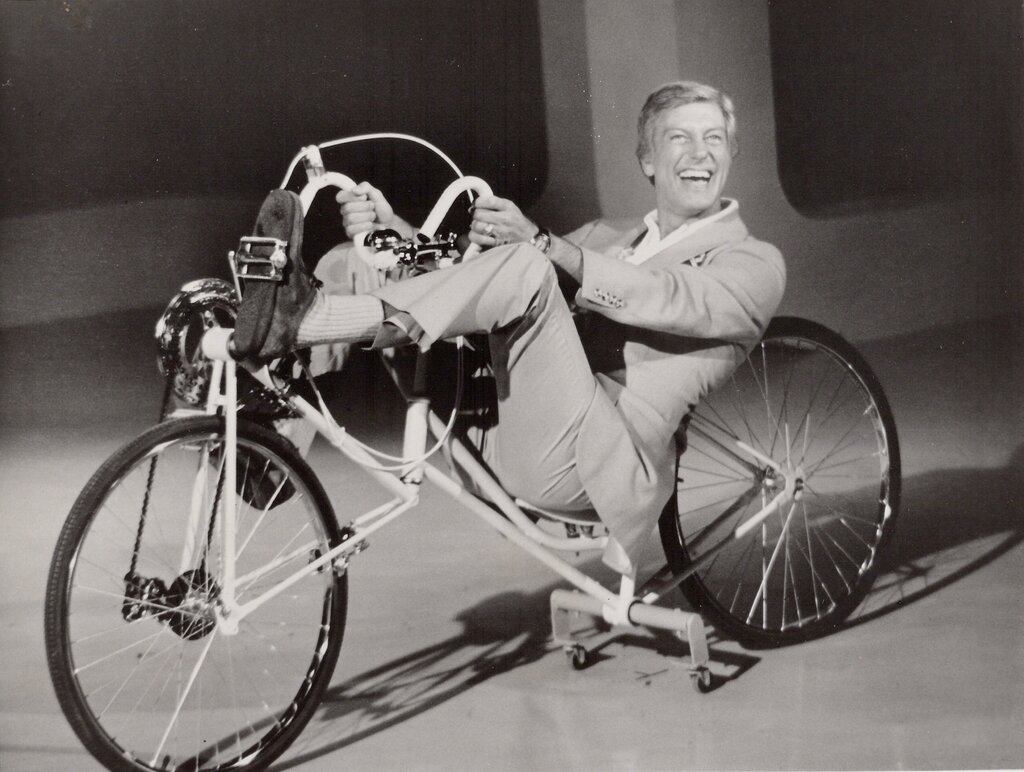Introduction to the Dick Bicycle
The Origins of the Dick Bicycle
The Dick bicycle, often known in historical circles, stands as a symbol of innovative engineering and design from the early 20th century. Understanding its origins offers insight into the technological advancements and creative minds that contributed to its prominence. James H. Dick, the visionary behind the Dick bicycle, aimed to revolutionize cycling with improved comfort and efficiency. His innovative designs gained significant admiration and laid the groundwork for modern bicycle advancements.
James H. Dick was an engineer and inventor hailing from the United States. In the early 1900s, bicycles were becoming increasingly popular, but there were still many challenges in achieving optimal design and performance. Dick’s objective was to address these issues and introduce a bicycle that could offer both practicality and versatility for a broader audience. His unique approach and mechanical expertise quickly caught the attention of cycling enthusiasts and manufacturers alike.
The Dick bicycle debuted at a time when cycling was transitioning from a pastime to a practical mode of transportation. Popular in urban environments, these bicycles provided a convenient means of getting around congested cities. Dick’s innovative designs played a significant role in this transition, offering enhancements that made bicycling more accessible and enjoyable for everyday use. By focusing on user experience and mechanical efficiency, the Dick bicycle made it possible for more people to adopt cycling as a part of their daily lives.
Understanding the origins of the Dick bicycle provides valuable context for appreciating its contributions to bicycle technology. James H. Dick’s ingenuity and forward-thinking approach championed many modern developments we now take for granted. His work redefined the bicycle, turning it into a more practical and effective solution for transportation and recreation.
Unique Design Features
Frame and Geometry
The frame and geometry of the Dick bicycle set it apart from other bicycles of its time. Understanding these features highlights the innovative thinking that went into its design, targeting improved efficiency and rider comfort. James H. Dick applied his engineering prowess to develop a frame that was both lightweight and durable, making it suitable for various types of riding.
The Dick bicycle featured a unique diamond frame geometry, which provided balance and stability. This design focused on distributing the rider’s weight evenly across the bicycle, enhancing maneuverability and control. The frame’s angles and proportions were meticulously calculated to offer the best possible riding experience. By emphasizing lightweight materials and strong joints, the Dick bicycle achieved a sturdy yet agile feel that appealed to riders.
One of the significant innovations was the inclusion of adjustable geometries. The Dick bicycle allowed riders to change the handlebar height and seat position easily. This adaptability meant that a single bicycle could cater to different riding styles and rider preferences. Whether commuting through city streets or embarking on longer recreational rides, riders could adjust their bicycles to maximize comfort and performance.
Drivetrain and Mechanical Innovations
The drivetrain and mechanical innovations of the Dick bicycle underscore its position as a groundbreaking piece of engineering. Understanding these features reveals how James H. Dick’s vision translated into practical enhancements that improved the bicycle’s functionality and performance. His mechanical ingenuity brought several notable advancements, making the Dick bicycle a favorite among early 20th-century cyclists.
One of the standout features of the Dick bicycle was its gearing system. During a period when single-speed bicycles dominated, the Dick bicycle introduced multi-speed gearing, allowing riders to tackle a variety of terrains with greater ease. This innovation made cycling more versatile and less physically demanding, particularly on inclines and long rides. The ability to shift gears smoothly and efficiently provided a significant performance boost, setting the Dick bicycle apart from its contemporaries.
Another significant innovation was the development of the chain tensioner. Maintaining proper chain tension was a common issue with early bicycles, often affecting ride quality and mechanical efficiency. The Dick bicycle featured an adjustable chain tensioner that allowed for easy adjustments, ensuring optimal chain performance and reducing wear and tear. This simple yet effective solution contributed to a smoother and more reliable riding experience.
The braking system on the Dick bicycle also reflected James H. Dick’s commitment to safety and performance. While many bicycles of the era used basic coaster brakes, the Dick bicycle incorporated more advanced hand-operated brake systems, offering improved stopping power and control. These brakes were designed to be responsive and durable, providing riders with confidence and security while navigating various road conditions.
Impact and Legacy
Cultural and Technological Influence
The impact and legacy of the Dick bicycle extend beyond its mechanical innovations, influencing both cycling culture and technological advancements. Understanding this influence provides insight into how the Dick bicycle shaped the evolution of cycling and contributed to broader technological progress. James H. Dick’s work not only improved the bicycle but also left a lasting mark on transportation and engineering practices.
Culturally, the Dick bicycle played a significant role in popularizing cycling as a mainstream activity. Its user-friendly design and advanced features made cycling accessible to a wider audience, encouraging more people to embrace cycling as a mode of transportation and recreation. This cultural shift fostered the growth of cycling clubs, races, and events, creating a vibrant and active cycling community. The Dick bicycle’s reputation for quality and performance made it a symbol of innovation, inspiring a sense of pride and identity among cyclists.
Technologically, the advancements introduced by the Dick bicycle served as a catalyst for future developments in bicycle engineering. The multi-speed gearing system, adjustable chain tensioners, and sealed bearings became standard features in subsequent bicycle designs, greatly enhancing their performance and reliability. These innovations also influenced other areas of transportation engineering, as the principles applied in the Dick bicycle found relevance in automotive and mechanical engineering fields.
Moreover, the emphasis on lightweight, durable materials and adjustable geometries set new standards for bicycle design. These principles guided the development of modern bicycles, leading to the creation of more efficient, comfortable, and versatile models. The Dick bicycle’s legacy is evident in the continuous pursuit of innovation within the cycling industry, as manufacturers strive to meet the evolving needs of riders.
The Dick Bicycle’s Place in Modern Cycling
Even decades after its initial introduction, the Dick bicycle remains relevant in modern cycling discussions. Its innovative features and design principles continue to inspire contemporary bicycle engineering and development. Understanding the Dick bicycle’s place in modern cycling highlights its enduring legacy and the ways it has shaped the bicycles we ride today.
One of the most significant aspects of the Dick bicycle’s legacy is its influence on the design and functionality of modern bicycles. Many of the features that were revolutionary at the time of its introduction, such as multi-speed gearing and adjustable components, are now standard in contemporary bicycle designs. The principles of balance, stability, and rider comfort that James H. Dick championed continue to guide the development of new bicycles, ensuring that modern models are both enjoyable and practical for riders.
The Dick bicycle also serves as a historical benchmark for innovation within the cycling industry. Collectors and cycling enthusiasts often seek out vintage Dick bicycles, valuing them both for their engineering excellence and their historical significance. Restored Dick bicycles are displayed in museums and at cycling events, reminding modern audiences of the pioneering advancements that helped shape today’s cycling landscape. This historical appreciation fosters a deeper understanding of the evolutionary journey of bicycle technology.
In addition to its design and historical significance, the Dick bicycle’s focus on user-centric enhancements resonates with modern cyclists. Today’s riders prioritize comfort, adaptability, and reliability, values that were at the core of the Dick bicycle’s design philosophy. This alignment of values ensures that the Dick bicycle remains a touchstone for quality and innovation in the cycling community, even as new technologies and materials emerge.
Conclusion: The Enduring Legacy of the Dick Bicycle
The Dick bicycle, with its remarkable design and innovative features, stands as a significant milestone in the history of cycling. Understanding its origins, unique design characteristics, and lasting impact provides a comprehensive appreciation of its contributions to bicycle technology and culture.
James H. Dick’s visionary approach to bicycle engineering revolutionized cycling, introducing advancements that enhanced comfort, efficiency, and performance. From the distinct frame geometry and multi-speed gearing to the durable materials and adjustable components, the Dick bicycle set new standards for excellence in bicycle design.
Culturally and technologically, the Dick bicycle has left an indelible mark. It popularized cycling, inspired community engagement, and influenced future developments within the industry. Its legacy continues to resonate in modern cycling, serving as a benchmark for innovation and quality.
In conclusion, the Dick bicycle represents more than just a mode of transportation. It embodies the spirit of ingenuity and progress, transcending its era to remain a celebrated icon in the world of cycling. By honoring its legacy, we acknowledge the pivotal role it has played in shaping the bicycles we ride today and the ongoing pursuit of excellence in bicycle engineering.







